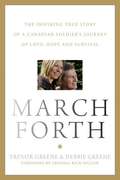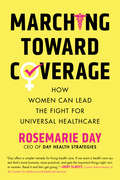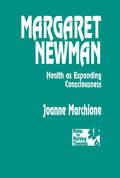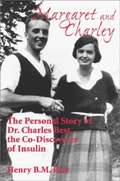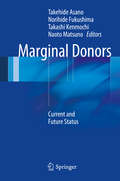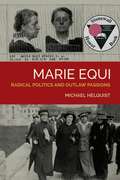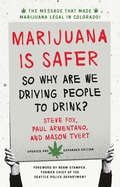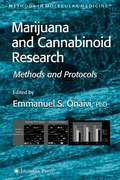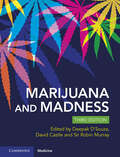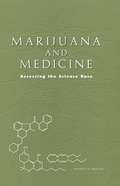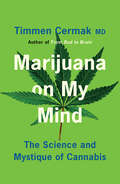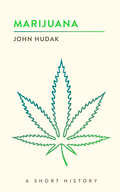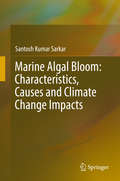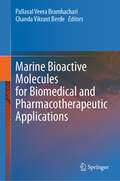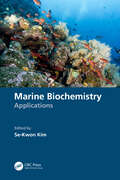- Table View
- List View
March Forth
by Trevor Greene Debbie GreeneAt the age of forty-one, Trevor Greene, a journalist and a reservist in the Canadian Forces, was deployed to Afghanistan, leaving behind his fiance, Debbie, and his young daughter, Grace. On March 4, 2006, while meeting with village elders in a remote village in Kandahar Province, Trevor removed his helmet, confident that a centuries-old pact would protect him from harm. Without warning, a teenage boy under the influence of the Taliban walked up to him and landed a rusty axe in his skull, nearly splitting his brain in two. Initially, Debbie was told that Trevor would not survive. When he did, she was told that he would never be able to communicate or move on his own. But after years of rehabilitation, setbacks and crises, Trevor not only learned how to talk and move again, but in July 2010, he stood up at his wedding, Debbie at his side and Grace carrying their rings down the aisle as their flower girl. March Forth is a remarkable story of love told in two voices: first in Trevor's, up until the attack; then in Debbie's, as she works tirelessly to rehabilitate her fiance. Together, Trevor and Debbie have written the next chapter in their remarkable story.
Marching Toward Coverage: How Women Can Lead the Fight for Universal Healthcare
by Rosemarie DayA lively, clear explanation of the American healthcare reform movement from a noted expert--giving women the tools they need to demand fair and affordable coverage for all peopleHealthcare is one of America's most dysfunctional and confusing industries, and women bear the brunt of the problem when it comes to both access and treatment. Women, who make 80 percent of healthcare decisions for their families, are disproportionately impacted by the complex nature of our healthcare system--but are also uniquely poised to fix it.Founder and CEO of Day Health Strategies Rosemarie Day wants women to recognize their trouble with accessing affordable care as part of a national emergency. Day encourages women throughout the country to share their stories and get involved, and she illustrates how a groundswell of activism, led by everyday women, could create the incentives our political leaders need to change course.Marching Toward Coverage gives women the clear information they need to move this agenda forward by breaking down complicated topics in an accessible manner, like the ACA (Affordable Care Act), preexisting conditions, and employer-sponsored plans. With more than 25 years working in healthcare strategy and related fields, Day helps the average American understand the business of national health reform and lays out a pragmatic path forward, one that recognizes healthcare as a fundamental human right.
Margaret Newman: Health as Expanding Consciousness
by Ms Joanne MarchioneMargaret Newman is one of the pre-eminent nursing theorists whose qualitative theories and methods have expanded the scientific base for the field. Her theory defines health as the unfolding or expanding of consciousness and nursing as an integrative force that focuses on the wholeness of the person. This volume offers a clear guide to applying theory to practice with individual, family and community health. Marchione's work reflects several years of experimentation and application of Newman's theory.
Margaret and Charley: The Personal Story of Dr. Charles Best, the Co-Discoverer of Insulin
by Henry B.M. BestAlthough Charles Best is known for discovering insulin, the story of his life neither begins nor ends with that one moment. Not only did he make many other discoveries, he was also one half of an extraordinary couple who, during their almost sixty years together, were involved in many of the significant events of the twentieth century. Margaret & Charley is the story of these two people from their beginnings on the east coast at the turn of the century through the years that followed. Through diaries, scrapbooks, photograph albums, and other documentation, the details of their lives are shared with the reader.
Marginal Donors
by Takehide Asano Norihide Fukushima Takashi Kenmochi Naoto MatsunoIn response to persistent donor organ shortages, organs from marginal donors, such as expanded criteria donors (ECD) and donation after cardiac death (DCD) donors, are now accepted and have been successfully transplanted, reducing the waiting times for transplantation. Especially in Japan, transplantation of DCD kidneys has a relatively long history because of the difficulty or lack of national consensus in accepting brain death, which has made it possible to accumulate considerable clinical experience. Thus, the current organ shortage has stimulated interest in the use of marginal donors for transplantation. On the other hand, however, it is known that these organs have a high rate of delayed graft function and a more complicated postoperative course. These drawbacks have created the greatest clinical challenge in transplantation to date because of the current shortage and limitations of donors using ECD and DCD. This book, prepared by distinguished authorities in their fields, is intended for clinicians and researchers. It highlights the use of marginal donors as a comparatively novel source of transplantation organs and provides a thorough overview of marginal donors from their historical origins to recent clinical applications, including the state-of-the-art science of organ/donor management, procurement, and preservation. Also provided is valuable information on ABO-incompatible donors which extend the availability of donor sources. Each chapter offers an individual analysis of the optimal requirements for the safe management and preservation of organs, including the heart, lung, liver, kidney, pancreas, and pancreatic islets.
Marginal Models in Analysis of Correlated Binary Data with Time Dependent Covariates (Emerging Topics in Statistics and Biostatistics)
by Jeffrey R. Wilson (Din) Ding-Geng Chen Elsa Vazquez-ArreolaThis monograph provides a concise point of research topics and reference for modeling correlated response data with time-dependent covariates, and longitudinal data for the analysis of population-averaged models, highlighting methods by a variety of pioneering scholars. While the models presented in the volume are applied to health and health-related data, they can be used to analyze any kind of data that contain covariates that change over time. The included data are analyzed with the use of both R and SAS, and the data and computing programs are provided to readers so that they can replicate and implement covered methods. It is an excellent resource for scholars of both computational and methodological statistics and biostatistics, particularly in the applied areas of health.
Marginal Space Learning for Medical Image Analysis
by Yefeng Zheng Dorin ComaniciuAutomatic detection and segmentation of anatomical structures in medical images are prerequisites to subsequent image measurements and disease quantification, and therefore have multiple clinical applications. This book presents an efficient object detection and segmentation framework, called Marginal Space Learning, which runs at a sub-second speed on a current desktop computer, faster than the state-of-the-art. Trained with a sufficient number of data sets, Marginal Space Learning is also robust under imaging artifacts, noise and anatomical variations. The book showcases 35 clinical applications of Marginal Space Learning and its extensions to detecting and segmenting various anatomical structures, such as the heart, liver, lymph nodes and prostate in major medical imaging modalities (CT, MRI, X-Ray and Ultrasound), demonstrating its efficiency and robustness.
Maria Montessori: A Biography
by Rita KramerThe definitive biography of a physician, feminist, social reformer, educator, and one of the most influential, and controversial women of the 20th century. Maria Montessori effected a worldwide revolution in the classroom. She developed a new method of educating the young and inspired a movement that carried it into every corner of the world. This is the story of the woman behind the public figure—her accomplishments, her ideas, and her passions. Montessori broke the mold imposed on women in the nineteenth century and forged a new one, first for herself and eventually for those who came after her. Against formidable odds she became the first woman to graduate from the medical school of the University of Rome and then devoted herself to the condition of children considered uneducable at the time. She developed a teaching method that enabled them to do as well as normal children, a method which then led her to found a new kind of school—the Casa dei Bambini, or House of Children—which gained her worldwide fame and still pervades classrooms wherever young children learn. This biography is not only the story of a groundbreaking feminist but a vital chapter in the history of education.&“Highly recommended for educators, parents, and moderate feminists who seek inspiration from one of the most accomplished women of this or any other age.&”—Publishers Weekly
Marie Equi: Radical Politics and Outlaw Passions
by Michael HelquistMarie Equi explores the fiercely independent life of an extraordinary woman. Born of Italian-Irish parents in 1872, Marie Equi endured childhood labor in a gritty Massachusetts textile mill before fleeing to an Oregon homestead with her first longtime woman companion, who described her as impulsive, earnest, and kind-hearted. These traits, along with courage, stubborn resolve, and a passion for justice, propelled Equi through an unparalleled life journey. Equi self-studied her way into a San Francisco medical school and then obtained her license in Portland to become one of the first practicing woman physicians in the Pacific Northwest. From Pendleton, Portland, Seattle and beyond to Boston and San Francisco, she leveraged her professional status to fight for woman suffrage, labor rights, and reproductive freedom. She mounted soapboxes, fought with police, and spent a night in jail with birth control advocate Margaret Sanger. Equi marched so often with unemployed men that the media referred to them as her army. She battled for economic justice at every turn and protested the U. S. entry into World War I, leading to a conviction for sedition and a three-year sentence in San Quentin. Breaking boundaries in all facets of life, she became the first well-known lesbian in Oregon, and her same-sex affairs figured prominently in two U. S. Supreme Court cases. Marie Equi is a finely written, rigorously researched account of a woman of consequence, who one fellow-activist considered "the most interesting woman that ever lived in this state, certainly the most fascinating, colorful, and flamboyant. " This much anticipated biography will engage anyone interested in Pacific Northwest history, women's studies, the history of lesbian and gay rights, and the personal demands of political activism. It is the inspiring story of a singular woman who was not afraid to take risks, who refused to compromise her principles in the face of enormous opposition and adversity, and who paid a steep personal price for living by her convictions.
Marijuana Is Safer
by Steve Fox Paul Armentano Mason TvertNationally recognized marijuana-policy experts Steve Fox, Paul Armentano, and Mason Tvert compare and contrast the relative harms and legal status of the two most popular recreational substances in the world--marijuana and alcohol. Through an objective examination of the two drugs and the laws and social practices that steer people toward alcohol, the authors pose a simple yet rarely considered question: Why do we punish adults who make the rational, safer choice to use marijuana instead of alcohol?Marijuana Is Saferreaches for a broad audience. For those unfamiliar with marijuana, it provides an introduction to the cannabis plant and its effects on the user, and debunks some of the government's most frequently cited marijuana myths. For current and aspiring advocates of marijuana-law reform, as well as anyone else who is interested in what is becoming a major political battle, the authors spell out why the message that marijuana is safer than alcohol must be a prominent part of the public debate over legalization. Most importantly, for the millions of Americans who want to advance the cause of marijuana-policy reform--or simply want to defend their own personal, safer choice--this book provides the talking points and detailed information needed to make persuasive arguments to friends, family, coworkers, and elected officials.
Marijuana Medical Handbook
by Ed Rosenthal Gregory T. Carter Dale GieringerAn estimated 40 million Americans have medical symptoms that marijuana can relieve. Marijuana Medical Handbook is a one-stop resource that gives candid, objective advice on using marijuana for healing, understanding its effects on the body, safe administration, targeting illnesses, side effects, and the various delivery methods from edibles and tinctures to smokeless vaporizer pipes. The book also details supply issues, cultivation solutions (in a chapter by renowned expert Ed Rosenthal), and legal consequences. This thoroughly revised edition incorporates the most up-to-date information on the ever-changing politics of marijuana, the plant's usage, and medical research on it.
Marijuana Medical Handbook: Practical Guide to Therapeutic Uses of Marijuana
by Ed Rosenthal Gregory T. Carter Dale GieringerAn estimated 40 million Americans have medical symptoms that marijuana can relieve. Marijuana Medical Handbook is a one-stop resource that gives candid, objective advice on using marijuana for healing, understanding its effects on the body, safe administration, targeting illnesses, side effects, and the various delivery methods from edibles and tinctures to smokeless vaporizer pipes. The book also details supply issues, cultivation solutions (in a chapter by renowned expert Ed Rosenthal), and legal consequences. This thoroughly revised edition incorporates the most up-to-date information on the ever-changing politics of marijuana, the plant's usage, and medical research on it.
Marijuana and Cannabinoid Research
by Emmanuel S. OnaiviA cutting-edge collection of readily reproducible in vitro and in vivo methods to elucidate the mechanisms associated with cannabinoid function in health and disease. The techniques can be used in studies across the board from genes to behavior. The molecular neurobiological methods are invaluable in analyzing the structure, the polymorphisms, and the molecular expression of the cannabinoid receptors (CBrs), as well as their association with polysubstance abuse. There are also methods for localizing cannabinoid receptors in different systems, visualizing cannabinoid effects using brain slice imaging and elctrophysiological approaches, and designing and synthesizing cannabinoids and endocannabinoids. The protocols follow the successful Methods in Molecular MedicineTM series format, each offering step-by-step laboratory instructions, an introduction outlining the principles behind the technique, lists of the necessary equipment and reagents, and tips on troubleshooting and avoiding known pitfalls.
Marijuana and Madness
by David J. Castle Deepak Cyril D’Souza Murray, Sir Robin M.An updated third edition of this award-winning book provides a comprehensive overview of the complex associations between cannabis and mental illness. Organised into easy to navigate sections, the book has been fully revised to feature eight entirely new chapters covering important novel aspects. Marijuana and Madness incorporates new research findings on the potential use of cannabinoids, and synthetic cannabinoids, in an array of mental illnesses, balanced against the potential adverse effects. The associations between cannabis and psychosis, developing putative models of 'cannabis induced' psychosis and pathways to schizophrenia are all covered. The book importantly discusses the impact of exposure to cannabis at various stages of neurodevelopment (in utero, in childhood, and during adolescence) and it thoroughly reviews the treatments for cannabis dependence and health policy implications of the availability of increasingly high potency cannabis. This book will quickly become an essential resource for all members of the mental health team.
Marijuana and Medicine: Assessing the Science Base
by Institute of MedicineThe medical use of marijuana is surrounded by a cloud of social, political, and religious controversy, which obscures the facts that should be considered in the debate.This book summarizes what we know about marijuana from evidence-based medicine--the harm it may do and the relief it may bring to patients. The book helps the reader understand not only what science has to say about medical marijuana but also the logic behind the scientific conclusions.Marijuana and Medicine addresses the science base and the therapeutic effects of marijuana use for medical conditions such as glaucoma and multiple sclerosis. It covers marijuana's mechanism of action, acute and chronic effects on health and behavior, potential adverse effects, efficacy of different delivery systems, analysis of the data about marijuana as a gateway drug, and the prospects for developing cannabinoid drugs. The book evaluates how well marijuana meets accepted standards for medicine and considers the conclusions of other blue-ribbon panels.Full of useful facts, this volume will be important to anyone interested in informed debate about the medical use of marijuana: advocates and opponents as well as policymakers, regulators, and health care providers.
Marijuana as Medicine? The Science Beyond the Controversy
by Alison MackSome people suffer from chronic, debilitating disorders for which no conventional treatment brings relief. Can marijuana ease their symptoms? Would it be breaking the law to turn to marijuana as a medication? There are few sources of objective, scientifically sound advice for people in this situation. Most books about marijuana and medicine attempt to promote the views of advocates or opponents. To fill the gap between these extremes, authors Alison Mack and Janet Joy have extracted critical findings from a recent Institute of Medicine study on this important issue, interpreting them for a general audience. Marijuana As Medicine? provides patients--as well as the people who care for them--with a foundation for making decisions about their own health care. This empowering volume examines several key points, including: Whether marijuana can relieve a variety of symptoms, including pain, muscle spasticity, nausea, and appetite loss. The dangers of smoking marijuana, as well as the effects of its active chemical components on the immune system and on psychological health. The potential use of marijuana-based medications on symptoms of AIDS, cancer, multiple sclerosis, and several other specific disorders, in comparison with existing treatments. Marijuana As Medicine? introduces readers to the active compounds in marijuana. These include the principal ingredient in Marinol, a legal medication. The authors also discuss the prospects for developing other drugs derived from marijuana's active ingredients. In addition to providing an up-to-date review of the science behind the medical marijuana debate, Mack and Joy also answer common questions about the legal status of marijuana, explaining the conflict between state and federal law regarding its medical use. Intended primarily as an aid to patients and caregivers, this book objectively presents critical information so that it can be used to make responsible health care decisions. Marijuana As Medicine? will also be a valuable resource for policymakers, health care providers, patient counselors, medical faculty and students--in short, anyone who wants to learn more about this important issue.
Marijuana on My Mind: The Science and Mystique of Cannabis
by Timmen CermakMarijuana is on everyone's mind. Why do so many people enjoy it? What is it doing in our brains? Is it safe for everyone to use? What should we be telling our children? What are the benefits of medical marijuana? How does CBD live up to its hype? Does marijuana have spiritual power? And with so much conflicting information out there, how do we begin to make up our own minds about cannabis? Marijuana on My Mind is for anyone who has ever experienced the mystique of cannabis or wondered exactly how cannabis works. With over 40 years of clinical experience, Dr Timmen Cermak uses science to make sense of the endless debate between advocates and opponents of cannabis and provides answers to some of the greatest mysteries surrounding marijuana.
Marijuana/Cannabinoids: Neurophysiology and Neurobiology (Routledge Revivals)
by Laura Murphy Andrzej BartkeFirst Published in 1992, Marijuana/Cannabinoids: Neurophysiology and Neurobiology is the first book to specifically address the effects of marijuana and cannabinoids on the physiology and behavior of the brain. The book discusses the dramatic effects of marijuana use on brain chemistry, pharmacology, and behavior. It also examines the isolation of natural cannabinoids and the synthesis of new cannabinoid-like compounds that have been important in research leading to the discovery and function of the cannabinoid receptor in the brain. Up-to-date research findings and in-depth reviews on marijuana and cannabinoids in the brain and their potential therapeutic value make Marijuana/Cannabinoids: Neurophysiology and Neurobiology essential for students, practitioners, and researchers involved in researching drugs of abuse.
Marijuana: A Short History
by John HudakFrom Reefer Madness to legal purchase at the corner store.With long-time legal and social barriers to marijuana falling across much of the United States, the time has come for an accessible and informative look at attitudes toward the dried byproduct of Cannabis sativa. Marijuana: A Short History profiles the politics and policies concerning the five-leaf plant in the United States and around the world.Millions of Americans have used marijuana at some point in their lives, yet it remains a substance shrouded by myth, misinformation, and mystery. This book offers an up-to-date, cutting-edge look at how a plant with a tumultuous history has emerged from the shadows of counterculture and illegality. Today, marijuana has become a remarkable social, economic, and even political force, with a surprising range of advocates and opponents. Public policy toward marijuana, especially in the United States, is changing rapidly. Marijuana: A Short History provides a brief yet compelling narrative that discusses the social and cultural history of marijuana but also tells us how a once-vilified plant has been transformed into a serious, even mainstream, public policy issue. Focusing on politics, the media, government, and education, the book describes why public policy has changed, and what that change might mean for marijuana's future place in society.
Marine Algal Bloom: Characteristics, Causes and Climate Change Impacts
by Santosh Kumar SarkarIn the marine environment, single-celled, microscopic, plant-like organisms naturally occur in the well-lit surface layer of any body of water. These organisms, referred to as phytoplankton or microalgae, form the base of the food web upon which nearly all other marine organisms depend. Algal bloom is a rapid increase in or accumulation of the population of about 300 species of algae due to excess nutrients (eutrophication), and is of major global interest as it causes reduction in species diversity, abrupt changes in water quality, and discoloration of the water (green, yellow, brown or red) depending on the species of algae and the type of pigments they contain. Dying blooms can also be an environmental concern as when the cells sink and decay, bacteria break down the organic material, which in turn strips oxygen from the water. This microbial oxygen demand at times leads to very low oxygen levels in the bottom waters, harming aquatic life. Documentation of this sporadic high abundance of algae, together with the significant species richness of the diatoms, requires comprehensive studies in the Sundarban coastal environment, which is facing severe degradation due to natural & anthropogenic stressors. In addition, a better understanding of the effects of algal blooms on seafood quality, the complex biological, chemical and physical interactions and subsequent effects on trophodynamics is needed to develop strategies for effective coastal zone management. The book discusses the occurrence of harmful algal blooms (HABs) caused by the dinoflagellates of the genus Alexandrium and Karenia, or diatoms of the genus Pseudo-nitzschia, which have large and varied impacts on marine ecosystems (such as large-scale marine mortality events that have been associated with various types of shellfish poisonings) depending on the species involved, the environment where they are found, and the mechanism by which they exert negative effects. HABs represent a major environmental problem in all regions of the U.S., and their occurrence is on the rise due to increased nutrient pollution. HABs have severe impacts on human health, aquatic ecosystems, and the economy. Such blooms, known colloquially as red tides due to their red or brown hues, are increasing in frequency and magnitude worldwide as a result of changes in oceanic climate, increased coastal eutrophication and enhanced long-distance dispersal in ballast water. As such, the book offers an in-depth account of the complex biological, chemical and physical interactions of the algal blooms (both innocuous and harmful ones). It also discusses the highly topical issue of the impact of global climate change on the frequency and severity of HABs in the context of alterations in temperature, stratification, light and ocean acidification.Focusing on both basic and applied limnology, this book is a reliable and up-to-date reference resource for students, teachers and researchers engaged in the field of coastal research/management at regional and global scales.
Marine Bioactive Compounds
by Maria HayesThe aim and scope of this book is to highlight the sources, isolation, characterization and applications of bioactive compounds from the marine environment and to discuss how marine bioactive compounds represent a major market application in food and other industries. It discusses sustainable marine resources of macroalgal origin and gives examples of bioactive compounds isolated from these and other resources, including marine by-product and fisheries waste streams. In addition, it looks at the importance of correct taxonomic characterization.
Marine Bioactive Molecules for Biomedical and Pharmacotherapeutic Applications
by Pallaval Veera Bramhachari Chanda Vikrant BerdeThis book explores cutting-edge research on the discovery and application of marine bioactive molecules for biomedical and pharmacotherapeutic purposes. The book begins by delving into the bioprospection of marine sponge microbiomes for bioactive metabolites using advanced metagenomics tools. It then explores metagenome mining approaches for the discovery of marine microbial natural products. The use of marine-derived fungi as a source of anticancer secondary metabolites is also discussed. The book then turns to the biomedical applications of marine-derived biomaterials, including marine biopolymers in tissue engineering and regenerative medicine. Marine-derived pharmaceuticals and polymeric nanostructures for cancer treatment are also examined. Next, the book looks at the use of marine microbial sources for the synthesis of metallic nanomaterials, prospects, current development, and challenges in nanomedicine. The book continues by exploring the treasure trove of natural polymers for tissue engineering in the marine environment. It also discusses the immunomodulatory and therapeutic potential of marine-derived astaxanthin, current developments, and prospects. Finally, the book concludes by exploring the recent progress in marine-derived nutraceuticals and marine phytoplankton bioactive compounds and their applications in medicine.
Marine Biochemistry: Applications
by Se-Kwon KimThis book provides the latest comprehensive methods for isolation and other novel techniques for marine product development. Furthermore, this book offers knowledge on the biological, medical, and industrial applications of marine-derived medicinal food substances. There has been a tremendous increase in the products derived from marine organisms for commercial application in industries every year. Functional foods of medicinal value are particularly in demand as new technology allows the stabilization of natural ingredients and their availability in pure forms to solve various human diseases. Marine flora and fauna have essential elements and trace minerals that nurture various hormones produced in the endocrine system to regulate the respective metabolisms, thereby providing a safe and healthy life to humans. The overall presentation and clear demarcation of the contents by worldwide contributions is a novel entry point into the market of medicinal foods from the sea. The exploration of marine habitats for novel materials are discussed throughout the book. The exploration and exploitation of the biochemistry of sea flora and fauna are limited, and this book extends the research possibilities into numerous marine habitats. Various approaches for extracting and applying the flora and fauna are discussed. This book will be of value to researchers, marine biotechnologists, and medical practitioners, due to the vast information, as well as industrial and medical applications of marine substances all in one place.
Marine Biochemistry: Isolations and Techniques
by Se-Kwon KimThis book provides the latest comprehensive methods for isolation and other novel techniques for marine product development. Furthermore, this book offers knowledge on the biological, medical, and industrial applications of marine-derived medicinal food substances. There has been a tremendous increase in the products derived from marine organisms for commercial application in industries every year. Functional foods of medicinal value are particularly in demand as new technology allows the stabilization of natural ingredients and their availability in pure forms to solve various human diseases. Marine flora and fauna have essential elements and trace minerals that nurture various hormones produced in the endocrine system to regulate the respective metabolisms, thereby providing a safe and healthy life to humans. The overall presentation and clear demarcation of the contents by worldwide contributions is a novel entry point into the market of medicinal foods from the sea. The exploration of marine habitats for novel materials are discussed throughout the book. The exploration and exploitation of the biochemistry of sea flora and fauna are limited, and this book extends the research possibilities into numerous marine habitats. Various approaches for extracting and applying the flora and fauna are discussed. This book will be of value to researchers, marine biotechnologists, and medical practitioners, due to the vast information, as well as industrial and medical applications of marine substances all in one place.
Marine Biomaterials: Characterization, Isolation and Applications
by Se-Kwon KimOceans are an abundant source of diverse biomaterials with potential for an array of uses. Marine Biomaterials: Characterization, Isolation and Applications brings together the wide range of research in this important area, including the latest developments and applications, from preliminary research to clinical trials. The book is divided into fou
